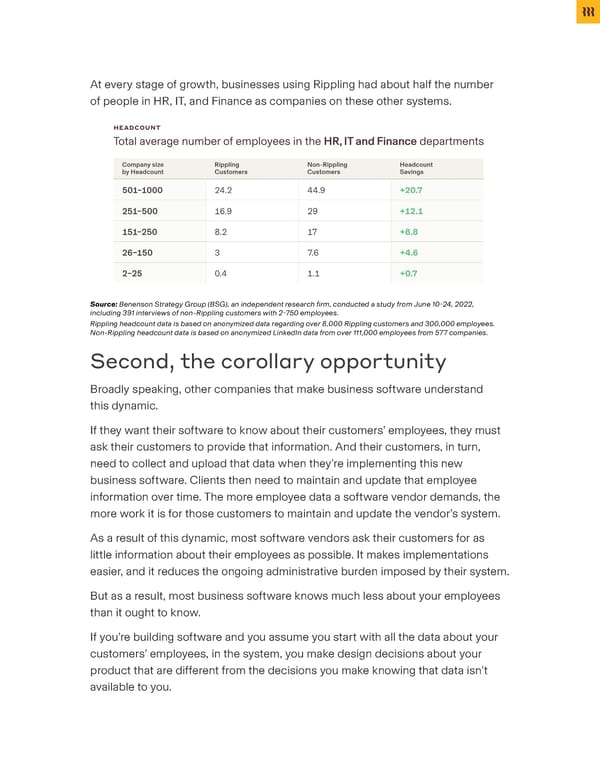At every stage of growth, businesses using Rippling had about half the number of people in HR, IT, and Finance as companies on these other systems. Source: Benenson Strategy Group (BSG), an independent research 昀椀rm, conducted a study from June 10-24, 2022, including 391 interviews of non-Rippling customers with 2-750 employees. Rippling headcount data is based on anonymized data regarding over 8,000 Rippling customers and 300,000 employees. Non-Rippling headcount data is based on anonymized LinkedIn data from over 111,000 employees from 577 companies. Second, the corollary opportunity Broadly speaking, other companies that make business software understand this dynamic. If they want their software to know about their customers’ employees, they must ask their customers to provide that information. And their customers, in turn, need to collect and upload that data when they’re implementing this new business software. Clients then need to maintain and update that employee information over time. The more employee data a software vendor demands, the more work it is for those customers to maintain and update the vendor’s system. As a result of this dynamic, most software vendors ask their customers for as little information about their employees as possible. It makes implementations easier, and it reduces the ongoing administrative burden imposed by their system. But as a result, most business software knows much less about your employees than it ought to know. If you’re building software and you assume you start with all the data about your customers’ employees, in the system, you make design decisions about your product that are different from the decisions you make knowing that data isn’t available to you.
 Investor Memo 2024 Page 3 Page 5
Investor Memo 2024 Page 3 Page 5